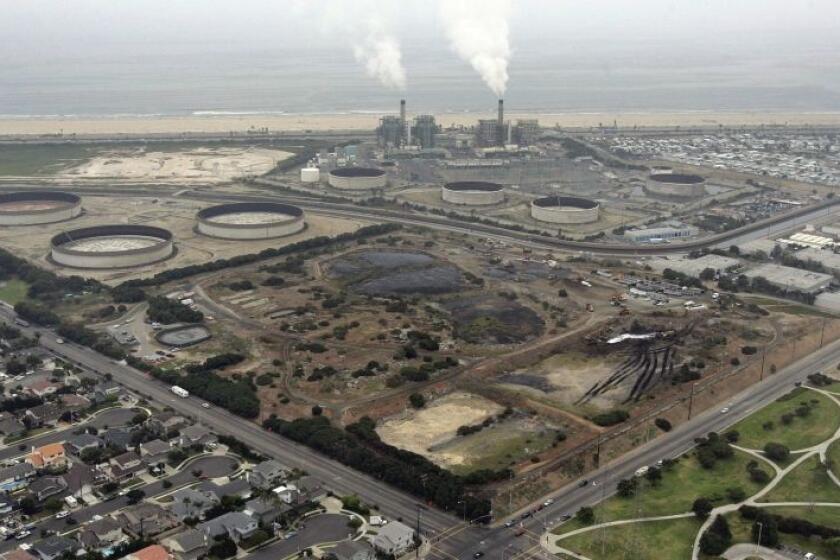Newport Beach teen’s early wildfire warning system deployed to protect Laguna Canyon

- Share via
A Newport Beach teen’s fifth-grade science project evolved into an autonomous network of sensors that will help firefighters spot flames in rugged, windswept Laguna Canyon before they can grow to threaten homes as part of a project launched earlier this week.
On Monday the system’s creator, 17-year-old Ryan Honary, set up the first of about 30 solar-powered and AI-assisted monitoring stations that will be positioned along the 133 Highway corridor. The rest should be deployed by September as part of a pilot program with the Orange County Fire Authority.
The solar-powered equipment uses infrared cameras and gas sensors that allow them to see things invisible to the human eye and detect a 1-foot patch of flames from up to 1,200 feet away. Proprietary artificial intelligence technology trains them to differentiate fires from heat coming from vehicle exhaust, the sun or other benign sources. They network with each other via Wi-Fi to create a constant web of surveillance in remote areas and automatically send alerts to firefighters at the earliest signs of a potential disaster.
“The reason why we specifically chose this area is because there’s a lot of dead brush that can easily catch fire,” Honary said. “There’s high voltage equipment. There’s a lot of ... homes that can catch on fire. There’s that long road where cars can collide and catch on fire, which actually happens more often than you might expect.”

Laguna Canyon also acts as a funnel for Santa Ana winds, which can reach speeds of over 30 miles per hour along the coastal vegetation-lined 133 Highway. The shrubs and trees there can stoke small patches of embers into catastrophic blazes.
“Wildfires are kind of like cancer,” Honary said. “When you catch them in the earlier stages they’re much easier to put out and deal with.”
Honary was watching live footage of the 2018 Camp fire, which damaged or destroyed almost 20,000 structures and resulted in 85 deaths in Butte County, when he was struck by how similar the homes that burned were to those in his own community. A desire to prevent such a tragedy from happening in Orange County and elsewhere inspired him to spend the next six years transforming a temperature sensor on a simple circuit board he designed for an elementary school project into a cutting-edge fire prevention system.
Honary created a startup called Sensory AI to further his efforts in 2021. Grant funding from the Irvine Ranch Conservancy as well as the encouragement of friends and family supported him as he developed and field-tested numerous prototypes.
He described the deployment of his brainchild in what is basically his own backyard as a “dream come true.” Knowing the system he created will watch out for his friends and family makes its graduation to real-world field testing especially meaningful.
“I definitely feel like there’s even more trust put into me because my platform is being trusted in helping protect the lives of not only me, but my neighbors as well.”
Wildfire prevention has been Sensory AI’s inspiration and focus for the past six years but may be just one of many potential uses for Honary’s platform. He said there’s potential to modify it into an early detection system for oil spills, gas pollution, landslides and other environmental concerns.
The junior balances development and management of his startup alongside hybrid classes at Stanford Online High School and Newport Harbor High, and still makes time to surf, play tennis, practice guitar and socialize. After high school he intends to study environmental science while continuing to improve on the platform he created.
Honary described it as an example of “AI for good,” at a time when the technology’s potential impact on fields like art, literature, entertainment and more have raised fears of job loss and the algorithmic decline of originality in creative fields.
“I feel like it’s not fair to say all AI is bad just because there’s bad uses for it,” Honary said. “You could say that about anything ... I don’t think people should automatically disregard AI.”

All the latest on Orange County from Orange County.
Get our free TimesOC newsletter.
You may occasionally receive promotional content from the Daily Pilot.




